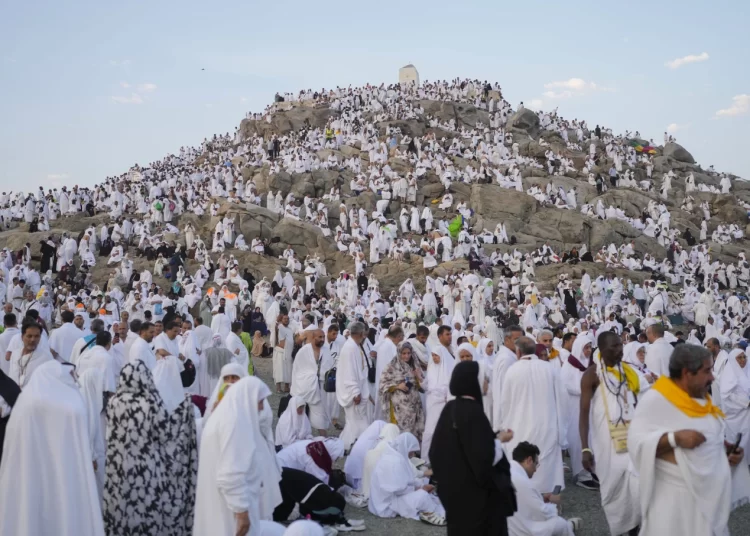Muslim pilgrims wrapped up the Hajj in the deadly summer heat with the third day of the symbolic stoning of the devil, and the last circumambulation around the Kaaba, Islam’s holiest site, in the city of Mecca.
The three-day stoning ritual in Mina, a desert site outside Mecca, is among the final rites of the pilgrimage and symbolizes the casting away of evil and sin. It started a day after pilgrims congregated on Saturday at a sacred hill known as Mount Arafat.
The final days of the annual Hajj coincide with Muslims around the world celebrating the Eid al-Adha holiday when the faithful with financial means commemorate Prophet Ibrahim’s test of faith, when God ordered him to sacrifice his only son, by slaughtering livestock and animals and distributing the meat to the poor.
The Hajj is one of the five pillars of Islam. Its rituals largely commemorate the accounts of Prophet Ibrahim and his son Prophet Ismail, Ismail’s mother Hajar and the Prophet Muhammad, according to the Quran, Islam’s holy book. In the Islamic version, God stayed his hand and Ismail was spared.
After the third symbolic stoning Tuesday, pilgrims headed to Mecca to perform “tawaf,” the circling the Kaaba in the Grand Mosque counterclockwise seven times. That circumambulation, known as the Farewell Tawaf, marks the end of Hajj as pilgrims prepare to leave the holy city.
Once the Hajj is over, men are expected to shave their heads, and women to snip a lock of hair in a sign of renewal.
Most of the pilgrims then leave Mecca for the city of Medina, about 340 kilometres (210 miles) away, to pray in the Prophet Muhammad’s tomb, the Sacred Chamber.






Discussion about this post